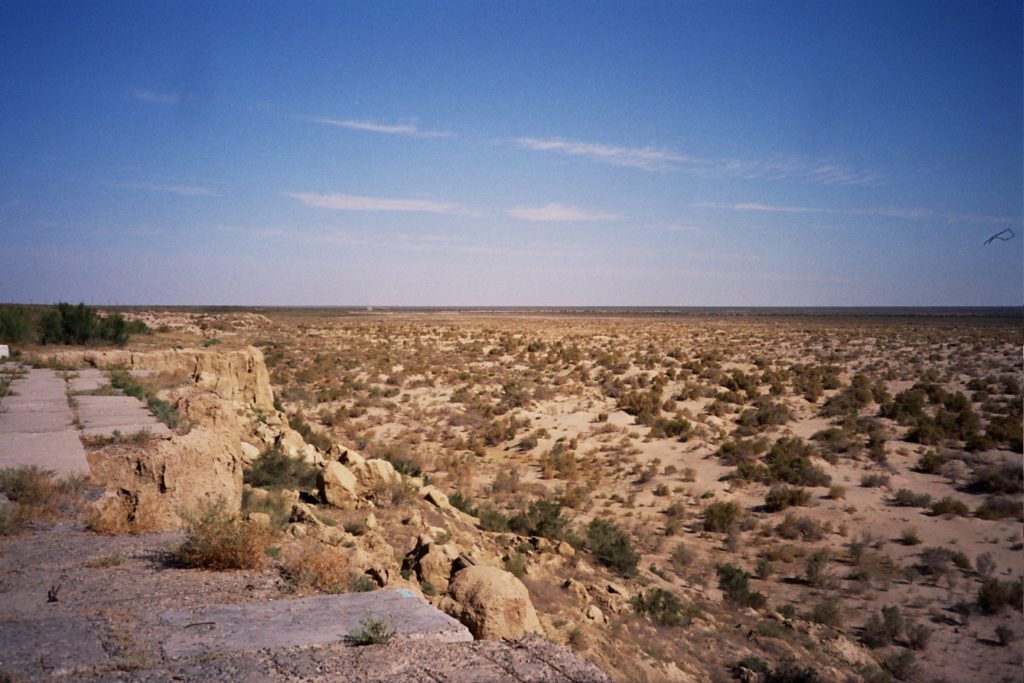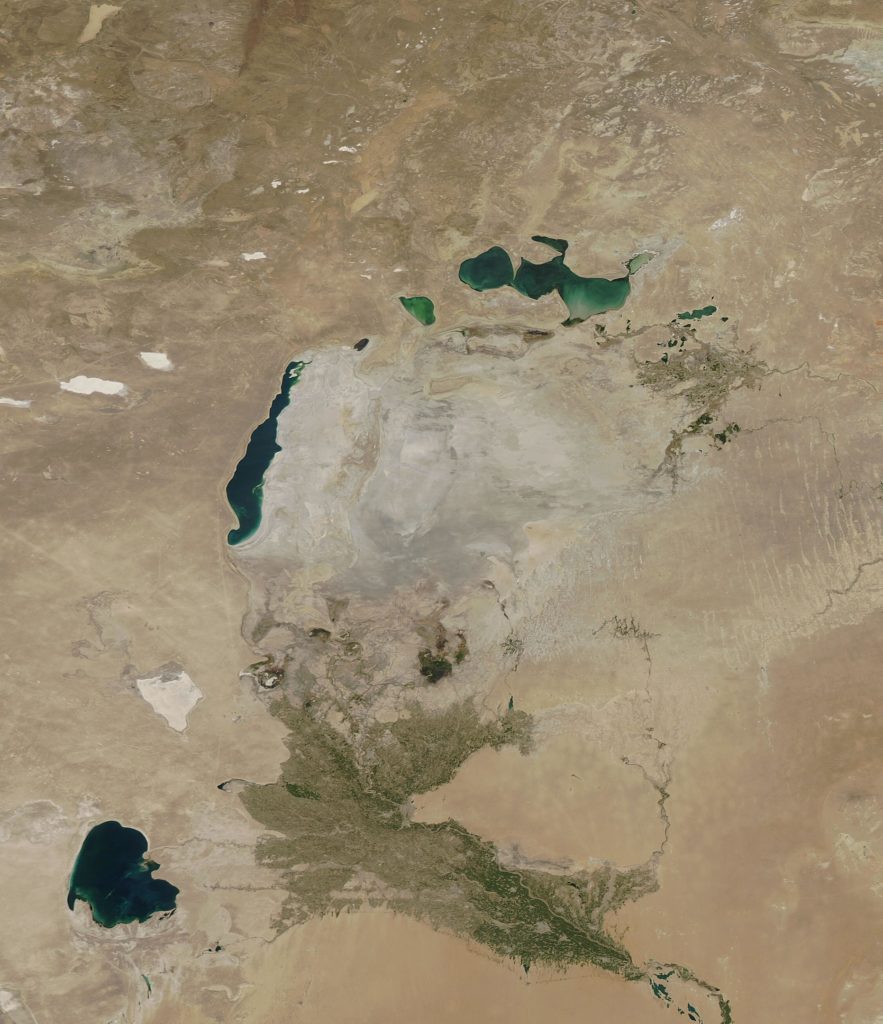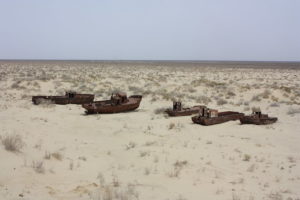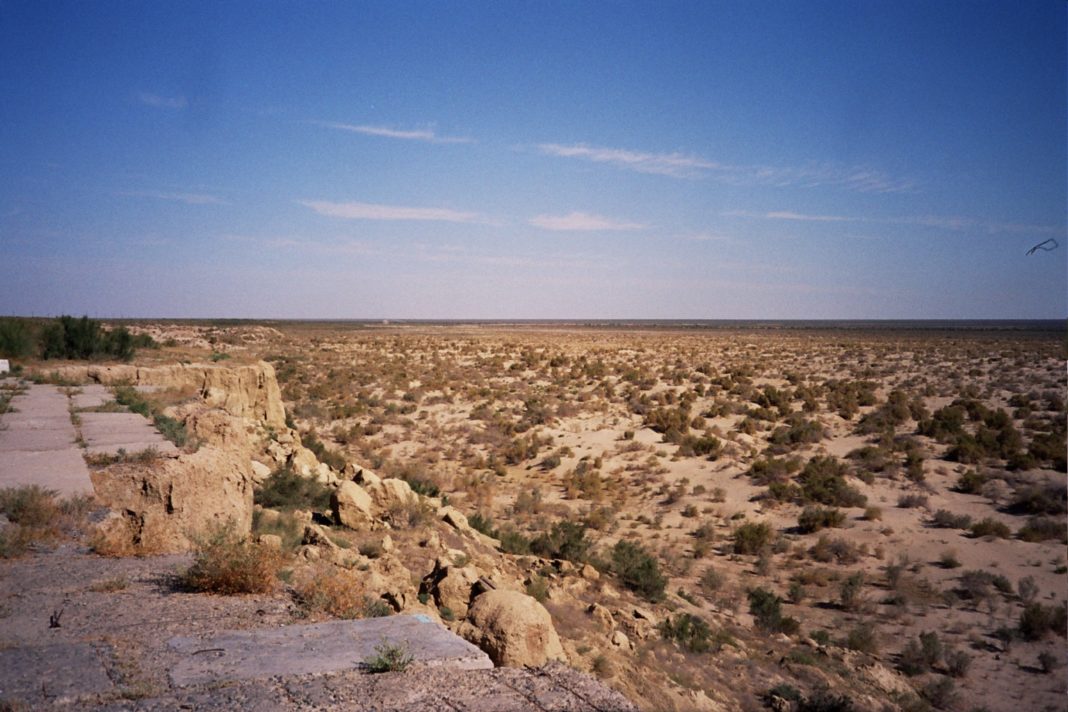The Aralkum Desert is a desert that has appeared since 1960 on the seabed once occupied by the Aral Sea. It lies to the south and east of what remains of the Eastern Basin Aral Sea in Uzbekistan and Kazakhstan. It is currently the youngest desert in the world.

The Aral Sea was once the fourth-largest inland water body in the world with an original area of 68,000 square kilometers. Now just 10 percent of its original size, this body of water experienced a reduction of water volume equivalent to Lake Erie and Lake Ontario combined.

Before its desertification, the Aral Sea sustained a large fishing industry that provided up to one-sixth of the Soviet Union’s fish. As the water receded, many fishing vessels and other boats were left behind in the desert. In the former port of the city of Moʻynoq, rusting vessels have become a tourist attraction and the site of the Stihia Festival, Central Asia’s largest electronic music festival.

The sands of the Aralkum and the dust that originates from it contain pollutants. The desert’s location is on a powerful west–east airstream that carries its polluted dust around the globe. Aral dust has been found in the fields of Belarus, the forests of Norway, and the glaciers of Greenland. Pesticides in the dust have been found in the blood of penguins in Antarctica.
According to Wikipedia















